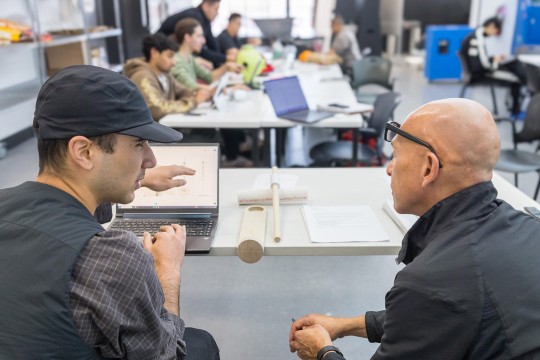Converting human power into electricity
Submitted
The Green Revolution Inc. developed a product that captures energy produced from exercise and converts it to 100 percent green power.
While in physical therapy for a shoulder injury, Jay Whelan ’86 (industrial engineering) had a lot of time to think about the equipment he was using. He knew that stationary bikes create resistance, and through this friction, heat is produced.
“The industrial engineer in me thought, ‘Why can’t I be productive and charge my cell phone? Why can’t I make electricity from the work I’m doing?’” Whelan says.
That idea led to The Green Revolution Inc., founded by Whelan in 2007 and based in Ridgefield, Conn. The company developed a product that captures energy produced from exercise and converts it to 100 percent green power.
According to Whelan, a typical home uses about 600 kilowatts of electricity for lighting each year. A group cycling class in a health club with 20 bikes that runs four classes a day could create that much power in just two months.
But while the intent of the new product was green, the design was not. That’s where Lee Griswold ’97 (industrial design) made a difference.
Griswold shows his enthusiasm for creative problem solving as the director of product design for GYRE9, a product design and development firm based out of Connecticut. Griswold has helped design everything from bicycles to laparoscopic surgical devices to windmills.
“One day my wife, Nicole Griswold ’96 (illustration), found an article in the paper about The Green Revolution, and upon further research, I found that the owner was also an RIT grad.” Griswold got in contact with Whelan and within 24 hours the ideas were pouring out.
“I saw tremendous opportunities to improve the product,” says Griswold. With the help of GYRE9, Whelan and Griswold were able to cut back on excess material and redesign a more efficient model within six months.
“The idea is really innovative. When you’re working out, all that energy being produced is wasted. The energy turns to heat, which means the air conditioners have to work harder to cool the gym. Using The Green Revolution technology, you can put the energy that is being produced back into the grid to power the gym.”
The versatile technology works with all major brands of indoor cycles and even provides an interactive carbon calculator to help cyclists calculate their carbon footprint. The higher the resistance on the bike, the more calories burned and electricity generated.
Whelan, who worked at Accenture, a management consulting, technology services and outsourcing company, for 18 years, envisions his product being used by private health clubs to help them become eco-friendly and save money.
“The product converts workout energy into electricity and puts it right into the power grid. Not only will it go toward powering your TVs and soda machines, it will also help to reduce our reliance on coal and oil-based fossil fuels.”
Using his consulting skills, Whelan has been pushing into the university market, visiting UCLA and Cal State to talk about the technology. Harvard Business School has also shown interest in purchasing the technology.
“I would love to see this at RIT someday,” says Whelan.
Whelan has even had discussions with the U.S. military about the product. “The military is often in remote places that are hard to get electricity to. From a sustainability standpoint, the Green Revolution technology is great because it creates human powered energy,” notes Whelan.
In the future, Whelan envisions the health club being able to track how much electricity is produced through exercise on The Green Revolution website. He also plans to make the product available for home use when the cost of grid-connection equipment decreases.
Griswold, who previously worked at Cannondale Bicycles, plans to use his wide variety of development experience to help redesign The Green Revolution technology to be even more efficient.
Words of advice from these two innovators: “Get out there and network—meet as many people as you can. Get face to face and make as many connections as possible,” says Griswold.
“Engineering is a useful, analytical degree that will help in all facets of business. You don’t have to become an engineer to benefit from the degree,” says Whelan.
Learn more about how GYRE9 solves design problems at the Gyre 9 website.













